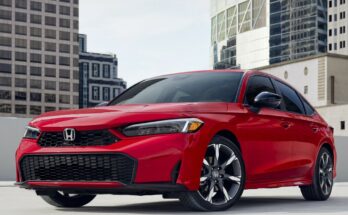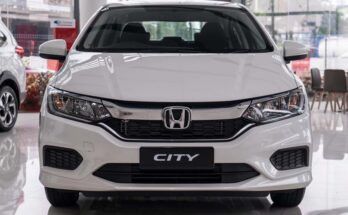Time never stops and things keep moving. The 7th generation Honda City sedan that debuted in Thailand three and a half years ago, has just received a facelift in the Thai market.
While Thailand was the first market in the world to get the 7th-gen City sedan in November 2019, it’s a bit late to welcome the facelift as India was the first market to get the refreshed 7th-gen City earlier this year.
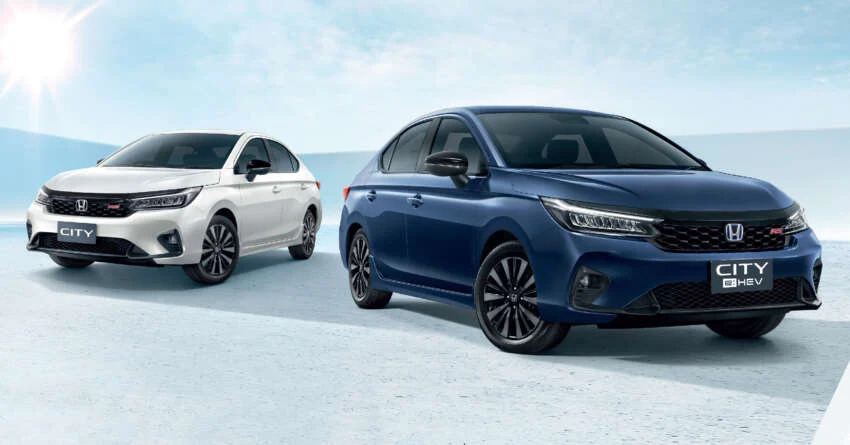
In terms of design tweaks, the front of the City has been modified with a smaller chrome bar, necessitating a new insert design for the grille and lower intake. All non-RS variants get the multi-slat design, whereas RS models have a honeycomb pattern instead. RS models additionally include skid skirts, fog lamps, and a sporty lower apron, which is optically connected to the fog lamp enclosures via black trim. Other changes include a revised rear bumper, with the RS versions receiving a conspicuous diffuser-like element to complement their black boot lid spoiler.
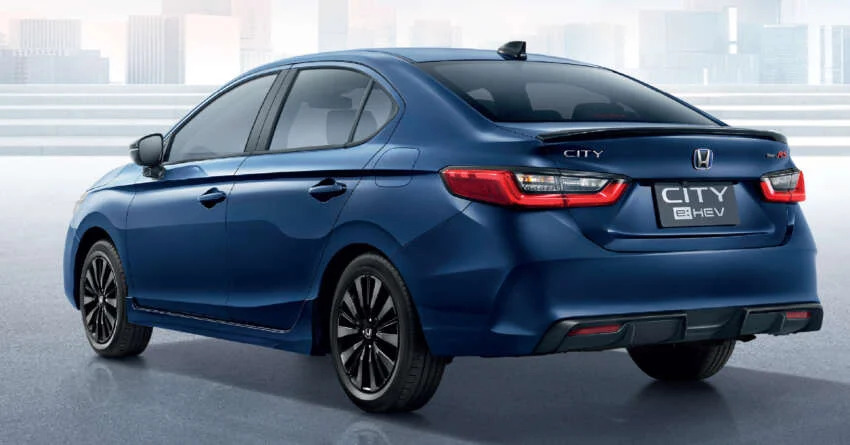
Inside, the new Honda City facelift retains the same dashboard design as before, with notable revisions being a new 4.2-inch TFT multi-info display for VTEC Turbo variants. Meanwhile, RS models now have combined leather and synthetic leather upholstery rather than leather and suede, and SV models have dark red synthetic leather trim on the center console and door panels to contrast the black-themed interior.
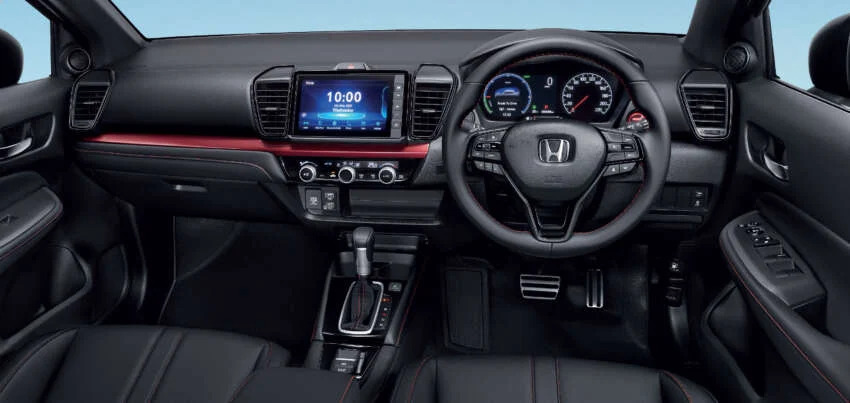
Customers in Thailand, as always, can accessorize their purchase with Modulo accessories such as fender and front garnishes, side skirts, front and rear under spoilers, Modulo wheels, and a more expressive boot spoiler.
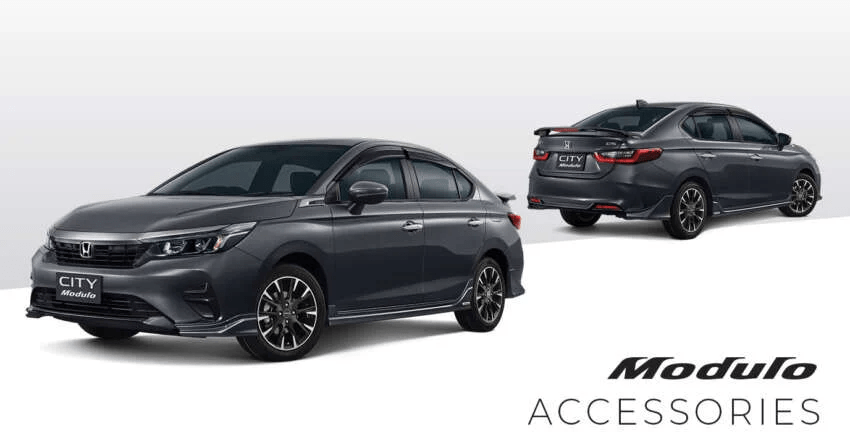
Powertrain choices remain unchanged as the V, SV, and RS continue to feature a 1.0L turbocharged three-cylinder petrol engine good for 121 hp and 173 Nm driving the front wheels via a CVT gearbox as before. Meanwhile, the e:HEV variants retain Honda’s Intelligent Multi-Mode Drive (i-MMD) hybrid system that sees the front wheels driven by an electric motor rated at 107 hp (80 kW) and 253 Nm. The petrol unit can clutch in through a single-speed transmission (dubbed E-CVT) to provide direct drive at higher speeds, where it is most efficient.
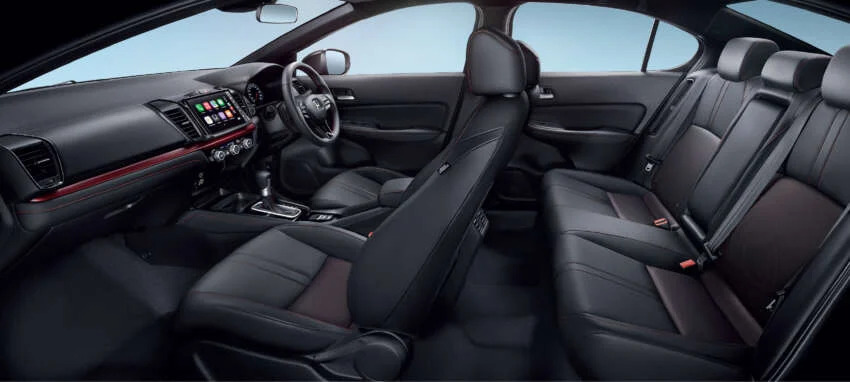
Automatic projector headlamps, 15-inch alloy wheels, automatic air conditioning, keyless entry and start, remote engine start, an idling stop system, an eight-inch Advanced Touch head unit (the V gets a basic, non-touchscreen system), wireless Android Auto and Apple CarPlay, four speakers, four airbags, ABS, EBD, brake assist, VSA, hill start assist, a multi-angle reverse camera (except V variant) and ISOFIX child seat anchorage.
Related: Was Sanath Jayasuriya Awarded a Honda City SX8?
The RS enhances the SV with features including LED headlamps, stylish 16-inch two-tone alloy wheels, paddle shifters, two power outlets for the back passengers, a rear armrest, eight speakers, 6 airbags, and the Honda Connect telematics system.
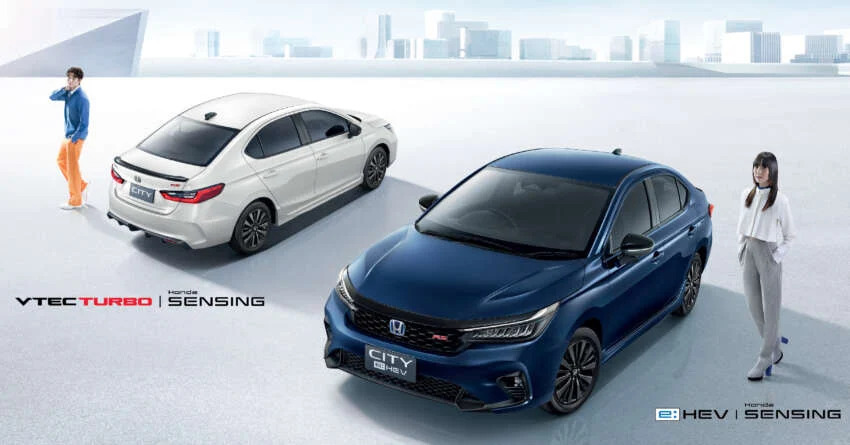
Moving on to the hybrids, the e:HEV SV is comparable to the turbocharged SV, despite having variant-specific features like 16-inch alloy wheels, rear vents, an electronic parking brake (with auto brake hold), a 7-inch touchscreen in the instrument cluster, and two USB-C connections at the back.
Related: 2023 Honda City Facelift Debuts in India
Lastly, the e:HEV RS expands upon the e:HEV SV list by including equipment seen on the turbocharged RS, like LED headlamps, sporty 16-inch alloys, eight speakers, and 6 airbags. Additionally, Honda LaneWatch is only available on the top model.

A computer animation professional with over 23 years of industry experience having served in leading organizations, TV channels & production facilities in Pakistan. An avid car enthusiast and petrolhead with an affection to deliver quality content to help shape opinions. Formerly written for PakWheels as well as major publications including Dawn. Founder of CarSpiritPK.com

